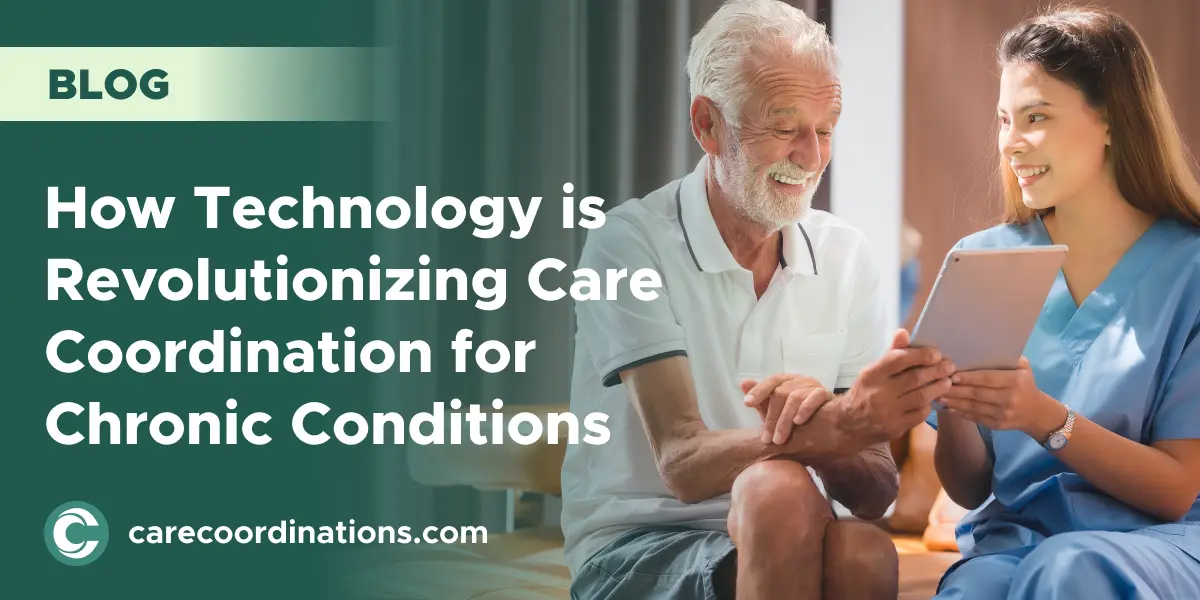Care coordination refers to the deliberate organization of patient care activities and information sharing among all participants concerned with a patient’s care to achieve safer and more effective care. Care coordination technology is particularly crucial for managing chronic conditions, where multiple healthcare providers and ongoing monitoring are often involved.
In recent years, technology has become a cornerstone in enhancing care coordination, improving outcomes, and making managing chronic conditions more efficient.
The Evolution of Care Coordination
Historically, care coordination relied heavily on manual processes, paper-based records, and face-to-face communication. Traditional methods posed significant challenges, including fragmented information, provider miscommunication, and limited patient history access. These issues often resulted in suboptimal patient outcomes and increased healthcare costs. However, digital health technologies have transformed care coordination, effectively addressing many of these challenges.
The Rise of Digital Health Technologies
Digital health technologies encompass many tools designed to improve healthcare delivery. Key technologies include electronic health records (EHRs), telemedicine, mobile health apps, wearable devices, artificial intelligence (AI), and machine learning (ML). Each plays a unique role in enhancing care coordination for chronic conditions.
Also Read: Building a Stronger Support System for Family Caregivers
Electronic Health Records (EHRs) and Their Impact
Electronic Health Records (EHRs) are digital versions of patients’ paper charts. They provide real-time, patient-centered records that make information available instantly and securely to authorized users. EHRs have revolutionized care coordination by offering several benefits:
⇒ Real-time access to patient information: EHRs ensure healthcare providers have up-to-date information, enabling better-informed decisions.
⇒ Improved communication among healthcare providers: EHRs facilitate seamless information sharing across different providers, reducing the risk of miscommunication.
⇒ Enhanced patient outcomes: With comprehensive data, providers can more accurately track patient progress and adjust treatments as necessary.
Telemedicine: Bridging the Gap
Telemedicine uses telecommunication technology to provide clinical health care from a distance. It has significantly improved care coordination for chronic conditions by:
⇒ Increased accessibility to care: Patients in remote or underserved areas can access specialist care without traveling long distances.
⇒ Remote patient monitoring: Providers can monitor patients’ conditions in real-time and intervene promptly as and if needed.
⇒ Cost-effectiveness: Telemedicine reduces the need for in-person visits, saving time and reducing healthcare costs.
Mobile Health Apps: Empowering Patients
Mobile health apps are software applications designed to support health management and wellness. They empower patients with chronic conditions by:
⇒ Patient engagement and self-management: Apps encourage patients to manage their health through reminders and educational resources actively.
⇒ Data tracking and personalized feedback: Patients can track their symptoms, medication adherence, and lifestyle habits and receive personalized feedback to improve their condition.
Also Read: Rebuilding Patient Confidence: Boosting Satisfaction and Retention
Wearable Devices: Monitoring Health in Real-Time
Wearable devices include fitness trackers, smartwatches, and medical-grade wearables that monitor various health metrics. They play a critical role in care coordination by:
⇒ Continuous health monitoring: Wearables provide constant data on vital signs, activity levels, and other health indicators.
⇒ Early detection of health issues: Continuous monitoring helps detect potential health issues early, allowing timely intervention.
⇒ Enhanced patient adherence: Wearables remind patients to follow treatment plans and maintain healthy habits.
The Role of Artificial Intelligence and Machine Learning
AI and ML are transforming care coordination by analyzing vast amounts of data to identify patterns and make predictions. Their applications include:
⇒ Predictive analytics for disease progression: AI can predict how a chronic condition will progress, allowing for proactive management.
⇒ Personalized treatment plans: Machine learning algorithms can recommend personalized treatment plans based on individual patient data.
⇒ Automated reminders and follow-ups: AI can automate routine tasks such as appointment reminders and follow-up calls, ensuring patients stay on track with their care plans.
Challenges and Limitations of Technology in Care Coordination
Despite the benefits, integrating technology into care coordination presents challenges:
⇒ Technical challenges: Interoperability between systems and platforms can hinder seamless information exchange.
⇒ Data security and privacy concerns: Protecting patient data from breaches and unauthorized access is crucial.
⇒ Practical challenges: Digital literacy among patients and providers can hinder effective technology use.
⇒ Resistance to technology adoption: Some healthcare providers and patients may resist adopting new technologies, preferring traditional methods.
The Future of Technology in Care Coordination
Emerging trends in digital health promise to further revolutionize care coordination:
⇒ Blockchain for secure data sharing: Blockchain technology can enhance data security and streamline provider sharing.
⇒ Advanced AI algorithms for precision medicine: AI will continue to evolve, offering more precise and personalized treatment recommendations.
⇒ Integration of IoT in healthcare: The Internet of Things (IoT) will enable interconnected devices to provide comprehensive health monitoring and data collection.
Also Read: Why Policymakers Should Prioritize Care Coordination in Healthcare Reform?
Embrace Technology for Superior Chronic Condition Care Coordination Today!
Technology has undeniably transformed care coordination for chronic conditions, offering tools that enhance communication, improve patient outcomes, and streamline healthcare delivery. As digital health advances, the potential for further improvements in care coordination is vast. By embracing these technologies, healthcare providers can offer better care to patients with chronic conditions, ensuring they receive the attention and treatment they need to manage their health effectively.
How does technology improve care coordination for chronic conditions?
Technology enhances care coordination by providing tools like EHRs, telemedicine, mobile apps, and wearables that facilitate real-time information sharing, remote monitoring, and personalized care plans.
What are the most common digital health technologies used in chronic condition management?
The most common technologies include Electronic Health Records (EHRs), telemedicine, mobile health apps, wearable devices, and Artificial Intelligence (AI).
What challenges are faced in implementing technology for care coordination?
Challenges include interoperability issues, data security and privacy concerns, patient and provider digital literacy, and technology adoption resistance.
How do wearable devices help in managing chronic conditions?
Wearable devices provide continuous health monitoring, early detection of potential issues, and reminders for patients to adhere to their treatment plans, improving the overall management of chronic conditions.
What is the future outlook for healthcare technology?
The future of healthcare technology includes advancements in blockchain for secure data sharing, AI for precision medicine, and IoT for comprehensive health monitoring, promising even better care coordination and patient outcomes.


